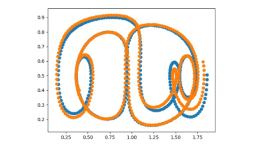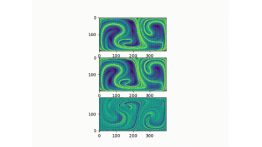Prof. Yecko and Graduate Student Kevin Yao ME'18, MEng'20 Present Research at the 2019 SIAM Snowbird Conference
POSTED ON: June 22, 2019
Professor Philip Yecko presented recent research done jointly with Kevin Yao ME'18, MEng'20, and Professor Eric Forgoston of Montclair State University, on the application of machine learning to dynamical systems and to fluid flows. The talk was part of the 2019 Society for Industrial and Applied Mathematics (SIAM) conference on Applications of Dynamical Systems, held in May in Snowbird, Utah.
The work done at Cooper evaluates the ability to predict trajectories and groups of trajectories in time-dependent two dimensional dynamical systems. The main focus is on dynamical systems that correspond to simplified large scale ocean circulation models known as the double gyre and quasi-geostrophic models. The results show that for a particular machine learning approach known as an "echo state network", better path forecasts are achieved by first predicting the flow's stream function and from this, deriving trajectories or paths. This is important because stream function can be found from satellite data and path prediction can be applied to problems ranging from the dispersal of spilled pollutant to hind-casting the location of a downed aircraft based on where its debris is later found.
More information about the conference can be found here.






